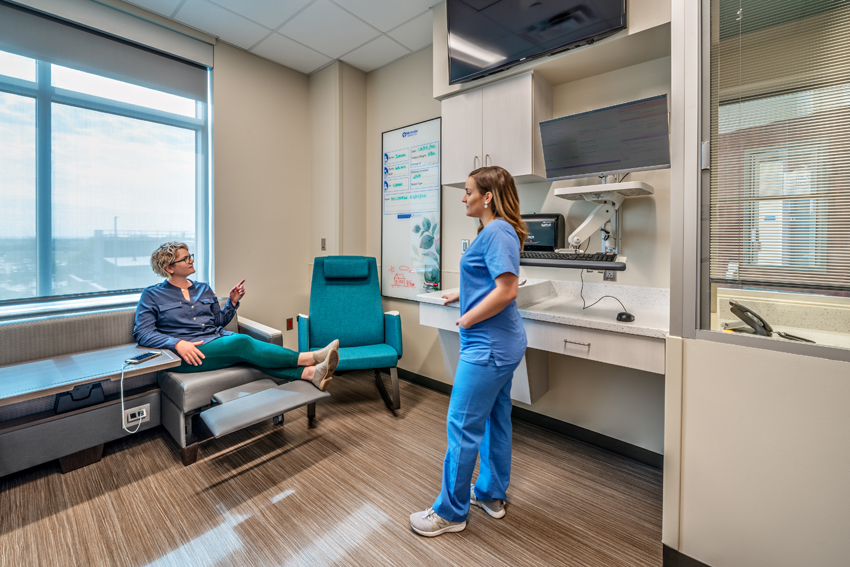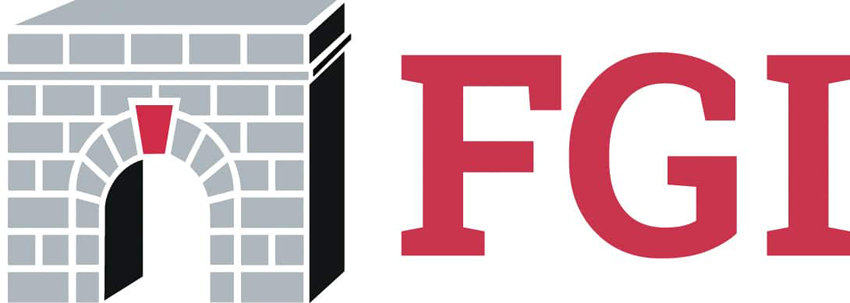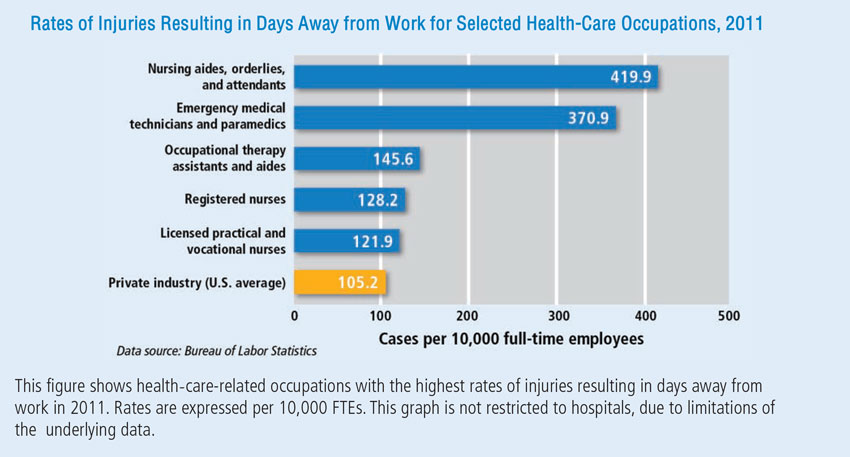Health-Care Flooring for the New Normal
Providing Solutions in Health-Care Settings
The patient experience and outcomes must come first in a health-care setting. This is particularly relevant as Medicare and Medicaid reimbursements are tied to patient satisfaction as determined by the Hospital Consumer Assessment of Health-Care Providers and Systems (HCAPHS). This patient satisfaction survey is required by the Centers for Medicare and Medicaid Services (CMS) for all hospitals in the United States. The survey is for adult inpatients, excluding psychiatric patients. The ACA reimbursement policy is based on a “pay for performance,” outcome-based perspective as opposed to the previous “fees for services" model.
The challenges in a health-care setting must be overcome to achieve a high level of patient satisfaction. If nurses are tired and stressed, if the noise levels in the hospital are too high, if the hospital is not kept hygienic, the patient suffers, as does the bottom line.
We will look at some of the most pressing challenges in health-care settings and examine how the specification of the right flooring product can diminish these problems. But first, let’s establish the scientific basis for the correct specification.

Nurses and other health-care workers spend many hours a day on their feet. The proper specification of flooring has proven positive impacts on their health and well-being.
Health-Care Design based on Data, Not Anecdote
When using design to solve problems, the seriousness of today’s health-care needs dictates that design decisions are made based on data and not anecdotes, hype, or heresy. Two of the most respected sources for data-based design are the Center for Health Design (CHD) and the recommendation from the Facilities Guidelines Institute (FGI).
According to CHD, “The Center for Health Design advances best practices and empowers health-care leaders with quality research that demonstrates the value of design to improve health outcomes, patient experience of care, and provider/staff satisfaction and performance. Through design research, education, and advocacy, we are leading the way in transforming hospitals, clinics, wellness centers, doctor’s offices, and residential care facilities for a safer, healthier tomorrow.”
The organization’s Pebble Project, Research Coalition, and Advisory Services programs connect industry leaders with resources that help them identify the impact that investing in facility design can make.
According to FGI, its mission is to “establish and promote consensus-based guidelines and publications, advised by research, to advance quality health care.”
Both of these organizations are dedicated to evidence-based design and should be consulted when specifying to solve the problems in today’s health-care settings. Among the most pressing issues is staff fatigue.

The Center for Health Design is a trusted source for data-based specifications.

The Facilities Guidelines Institute provides guidance for designers and specifiers.
Staff Fatigue and Aging Nurses
Long before COVID-19’s impact on society, overworked and overstressed nurses were already a problem looking for a solution. Nurses are on their feet for many hours per shift, with 12-hour shifts being typical. While sore feet might be the obvious outcome, many more ailments are associated with long periods of standing and walking. According to an article in a nursing publication titled “Moving violations: negative impacts of standing and walking in nurses’ health”:
“Long periods of walking and standing are associated with plantar fasciitis, tendonitis, cumulative muscle fatigue, and varicose veins. Chronic venous disease, including primary/idiopathic abnormalities of the venous system and secondary sequelae after deep venous thrombosis, have also been associated with women who work in standing positions. In general, long periods of walking and standing without adequate rest periods is bad for your health.”5
These conditions lead to missed work and workers compensation claims many times greater than in other professions, as seen in the graph below.6
Also, the workforce in hospitals is getting older. While the valuable experience and wisdom of older workers is much needed, the risks of injury and illness are greater.
The case study on the next page illustrates both the problem of nurse fatigue and a solution in flooring specification.
Noise
When discussing the challenges of noise in a health-care setting and solutions to this problem, it makes sense to consider this quote from a report on perhaps the most influential nurse of all time:
“Florence Nightingale proposed that nursing’s major role in patient care is to produce a state of mind and body conducive to healing. She stressed nursing’s responsibility for managing the patient’s environment, assuring that the patient received adequate comfort, hygiene, nutrition, and rest.”7
Noise has long been recognized as an environmental stressor that causes physiological, psychological, and behavioral changes in healthy subjects. Environmental noise and its potential effects on healing and recovery are of special concern to nurses in hospital settings, where increased noise levels and effect of noise on patient sleep and cognitive function have been well documented.
Perhaps one of the most significant examples left behind by the founder of modern nursing, Florence Nightingale, was her commitment to patient care. She understood the importance of producing a state of mind and body conducive to healing. When it comes to designing the built environment in a way that promotes healing, the old adage “out of sight, out of mind” rings true, as acoustics are too often neglected. Yet, according to the 2015 HCAHPS scores, noise remains at the top of the list of patient complaints.8
The World Health Organization (WHO) guidelines call for continuous background noise in hospital patient rooms to remain at or below 35 dB(A) during the day and 30 dB(A) at night, with nighttime peaks no higher than 40 dB(A).9 A 2005 study examining U.S. hospital noise levels over the previous 45 years found that no facility complied with these guidelines. In fact, hospital background noise levels have been increasing since the 1960s, up from 57 dB(A) in 1960 to 72 dB(A) in 2007 during the daytime, and 42 dB(A) in 1960 to 60 dB(A) during the night.10
To better improve the healing environment for patients and providers, health-care designers and specifiers are now seeking products that feature specific acoustic benefits. While “noise” is a subjective term and can be traced to a variety of sources (hallway conversations, footsteps, rolling carts, and alarms, to name a few), hospitals and health-care facilities are working to implement sound control and mitigate sound transmission, as both play a key role in creating a healing space.

Rates of injuries resulting in days away from work are far higher for some health-care workers than for the average of the private industry labor force.
Impact of Noise on Patients and Staff
A comfortable acoustic environment is vital to supporting the safety, health, healing, and well-being of patients and providers. Patients’ physiological health can be negatively affected by poor acoustics, inhibiting the healing process and increasing their chances for readmission. High noise levels can lead to patient annoyance, sleep disruption, elevated blood pressure, and decreased healing rates.11 In terms of mental and emotional health, acoustics can impact how comfortable and secure a patient and their family members feel in the health-care setting. Loud noises that startle patients or disrupt sleep can have long-term effects, while softer sound transmission can present a lack of privacy and also cause discomfort.12
Likewise, patient care teams also feel the impact of poor acoustics. When completing tasks in a space with a high level of noise, providers may have to exert more energy to listen or be heard, which can cause fatigue and burnout. Speech intelligibility is imperative in a health-care environment, and extraneous sounds can impede providers’ abilities to understand and quickly respond to a variety of auditory signals—such as conversations, alarms, and other equipment—which affect patient care and human error.
Furthermore, HIPAA standards require that individual patient information communicated orally, written, or digitally remain private.13 When the health-care environment is finished with materials that reflect sound or is designed without acoustics in mind, discussions among patients and providers can easily carry into other areas and be overheard by an unintended listener. Poor acoustic design increases the risk of noncompliance with federal privacy regulations.
Different design strategies and technologies can be used to quiet the healing environment and minimize the transmission of sound from adjacent spaces. Products such as acoustical ceiling tiles and acoustical wall panels aim to protect patients and providers from extraneous noise by absorbing sounds from a variety of sources rather than reflecting them back into the environment. Another often overlooked component is flooring surface technology that offers noise-reducing qualities without sacrificing cleanliness or ergonomic comfort.
In the health-care environment, flooring that is hygienic and easy-to-clean is a top priority—prompting most designers to select hard surface materials for durability and cleanliness. Constant foot traffic and the movement of carts and other equipment along these surfaces, however, often create loud noises that increase sound levels throughout the facility and impact patient satisfaction. Opting for a carpet or other fibrous material that absorbs sound, on the other hand, can raise concerns of cleanliness as well as increase risks of tripping and catching when rolling carts. Recent breakthrough technology has resulted in a third option—engineered resilient flooring with a 5-millimeter vulcanized composition rubber backing—that garners the hygienic benefits of a hard surface with the acoustic and ergonomic attributes associated with carpets and other textile surfaces. These innovative materials mitigate the energy of sound, making the space seem quieter, while providing supportive cushioning underfoot to drive safety and comfort. Adding a new dimension in health-care finishes, engineered resilient flooring options are helping to create more comfortable and effective healing environments for patients and providers.









